Rose Pierre de Ronsard: unpretentious variety with delicate pink flowers
Content
Variety description and characteristics
The Pierre de Ronsard climbing rose can be recognized by its large double buds of a delicate white-cream color with a pinkish middle. The lower leaves of the flower are light, the middle ones are more intensely colored, due to which the buds look very bright against the background of dark green leaves. The rose belongs to remontant varieties, blooms several times during the season. At the first flowering, the buds are larger (up to 12 cm in diameter), with each subsequent wave their size decreases slightly to 8-10 cm. The flowering is abundant and long.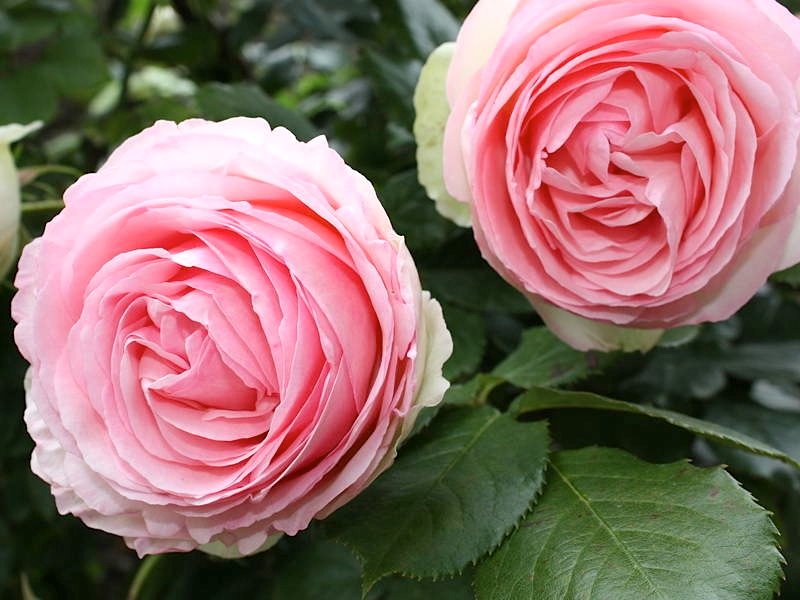
An adult bush grows up to 3 m in height, but the plant can reach this size only after 3-4 years, since it does not differ in intensive growth. The shoots are long, flexible, with a small number of thorns, they perfectly wrap around the arched structures, and can also trail along any support. The leaves are rather large, hard, glossy, dark green above, slightly lighter below. Such varietal features contribute to the fact that the rose of this variety is more often than others used in vertical landscaping of garden and backyard plots.
High decorative qualities are not the only advantage of the variety. Rose Pierre de Ronsard is quite winter hardy, despite the fact that it was bred for cultivation in a Mediterranean climate. The rose is rarely exposed to diseases and pests. In mild climates, it blooms continuously and very luxuriantly; in colder climates, the flowering may not be so abundant, and the flowers are not so large.
Video "Description"
From the video you will learn interesting facts about this bush.
Landing scheme and rules
For maximum growth and flowering, a climbing rose needs a lot of sunlight, so the area for planting should be well lit and ventilated, but without drafts. As for the size of the plot, for most climbing varieties, a 50x50 planting is acceptable, since the bushes usually grow upwards, but given the fairly wide (up to 2 m) crown of the Pierre de Ronsard variety, it is better to plant it according to the 2x2 meter scheme. 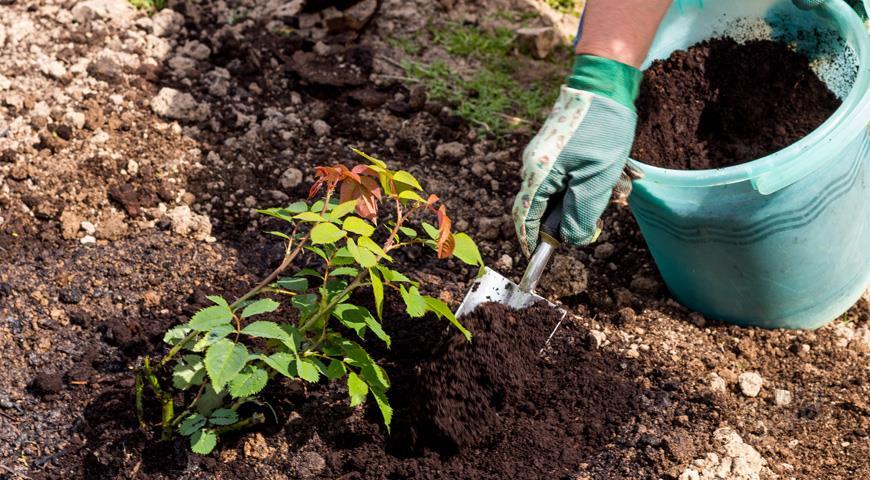 Since most often the rose is planted alone in the vicinity of some architectural form, there are no problems with distance, but when planting in groups, the recommended scheme should be followed. Otherwise, the bush forms dense thickets, which will lead to a decrease in flowering and make it difficult to care for it.
Since most often the rose is planted alone in the vicinity of some architectural form, there are no problems with distance, but when planting in groups, the recommended scheme should be followed. Otherwise, the bush forms dense thickets, which will lead to a decrease in flowering and make it difficult to care for it.
Rose planting is carried out in the spring - approximately at the beginning or mid-May. Shortly before planting, the soil should be dug up, all debris and weeds should be removed. The soil for the rose should be neutral in acidity.
If the acidity of your soil is far from this indicator, it needs to be leveled. After 1-2 weeks, holes of 40x40 cm are dug in the prepared area, with a wider root system of the seedling, the size of the hole increases. 0.5 buckets of compost or humus are poured into each hole, and 0.5 buckets of water are poured.When the water is absorbed, the fertilizer should be sprinkled with a thin layer of soil to prevent direct contact of the roots with the fertilizer.
Further, the seedling is placed in the center of the planting pit, the roots are leveled and the plant is covered with earth with the help of hands, periodically compacting the soil. The planted bush is carefully watered again, making sure that the soil does not erode. If the seedling has not been pruned, this should be done immediately after planting. If desired, the soil around the bush can be covered with mulch. It is better to plant a seedling in the evening, but the rose loves watering in the morning.
Climbing species care
Most of the care of the climbing rose is no different from the care of other varieties of this culture, with the only difference that the Pierre de Ronsard rose needs support. It is necessary to install the support so that it does not create a shadow for the bush, since the sun loves the rose very much and its flowering depends to a certain extent on it. But you also need to systematically monitor the density of the bush, guide and fix the shoots.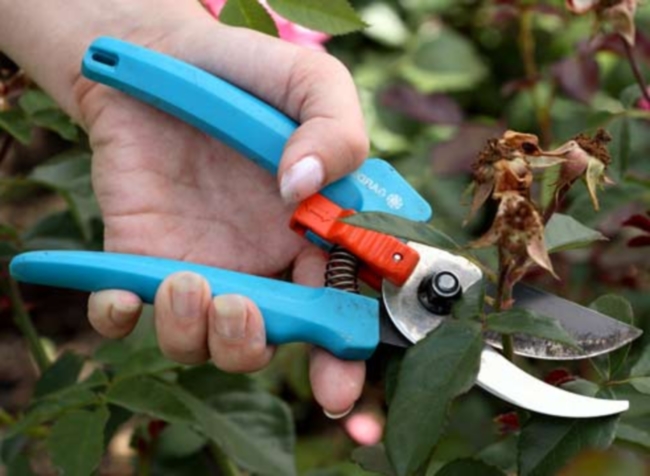
The rest of the care consists in standard procedures:
- rare but abundant watering (1-2 buckets per bush) - if the flowers wither in abnormal heat, watering should be carried out more often;
- shallow loosening of the soil in the near-trunk circle and removal of weeds - mulching the soil will eliminate the need to carry out these activities;
- preventive treatments for diseases - with a 1% solution of Bordeaux liquid, the lashes are treated in early spring and autumn, before sheltering for the winter;
- removal of faded buds throughout the flowering season;
- the growth and flowering of the bush depends on the timely applied fertilizers, so you need to feed it 3-4 times per season: in early spring - nitrogen fertilizers, before flowering - a complex mineral mixture, at the end of summer - phosphorus and potassium;
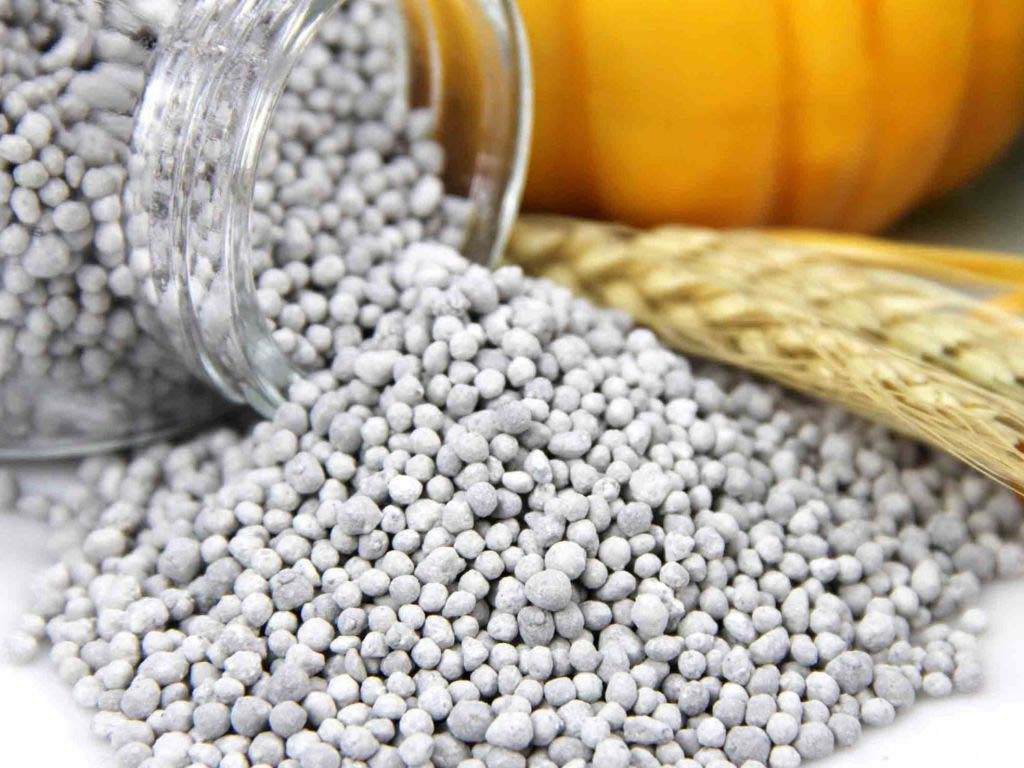
- since the bush blooms several times, then during each flowering period, organic matter (liquid droppings, mullein) can be introduced, as well as mulch the soil with peat;
- pruning is carried out in the spring and after flowering: spring pruning involves the removal of damaged shoots, in autumn, all shoots 3-5 years old are removed, and this year's shoots are shortened by a quarter - they will form buds next year.
For the winter, the rose needs to be covered. To do this, the lashes are carefully removed from the support, unwound, and placed on a litter of wood or straw - the litter is used to prevent shoots from contacting wet and cold soil. The laid lashes are covered with dry leaves or spruce branches on top. In a harsh winter with little snow, it is recommended to additionally cover the lashes with dense material.
Use in landscape design
Rose Pierre de Ronsard has always been the prima of climbing varieties, so its use in landscape design is widespread. The shrub of this rose grows beautifully upward, its lashes are flexible and pliable, and if the rose is properly shaped and guided, it can not only decorate garden and architectural forms, but also become the central elements in the landscape of the site.
A rose such as Pierre de Ronsard can be applied in completely different landscape styles. It is ideal for decorating arches, columns, gazebos.
Planted along the wall, it will become a decoration of the house, and along the fence or fence - it forms a dense hedge, strewn with numerous delicate inflorescences. Ornamental trees can be used as a support for this rose: rowan, broom, yew and others. Ideally, if there is a dead tree on the site, you can plant a seedling next to it, and in just two years you will have an unusually beautiful and original element of the landscape - a blooming rose tree.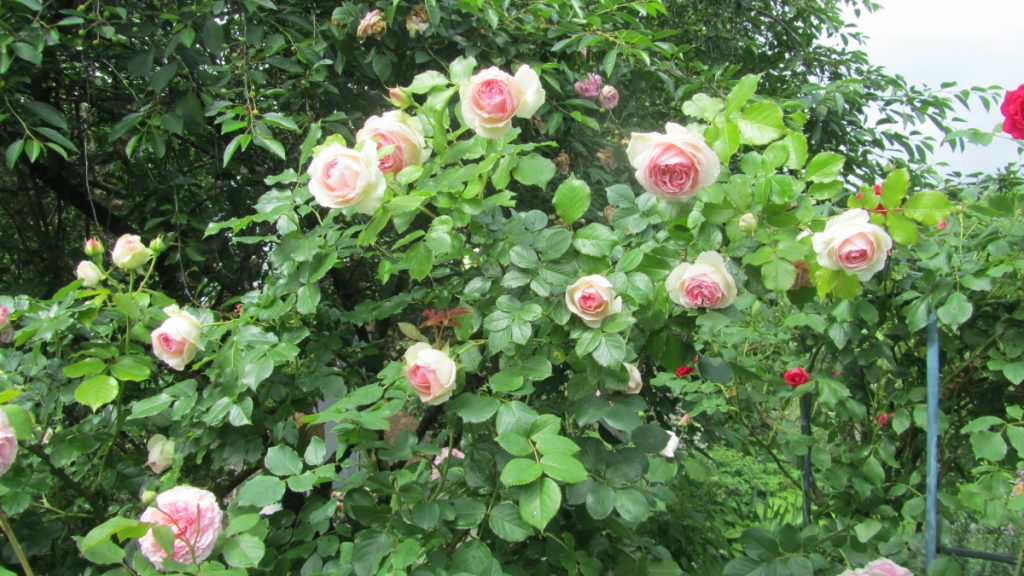
When using a rose in vertical gardening, pay special attention to trimming the lashes, as the decorative qualities of the plant depend on it.Pruning for a climbing rose is not only the formation of a bush, but also a way to enhance flowering, make the rose more luxurious and blooming for a long time. Remember that the formation of buds occurs mainly on the shoots of the last year, so pay special attention to pruning these lashes, and then the rose will delight you with abundant and long flowering for many years.
Blossom video
From the video you will learn how this bush blooms.



